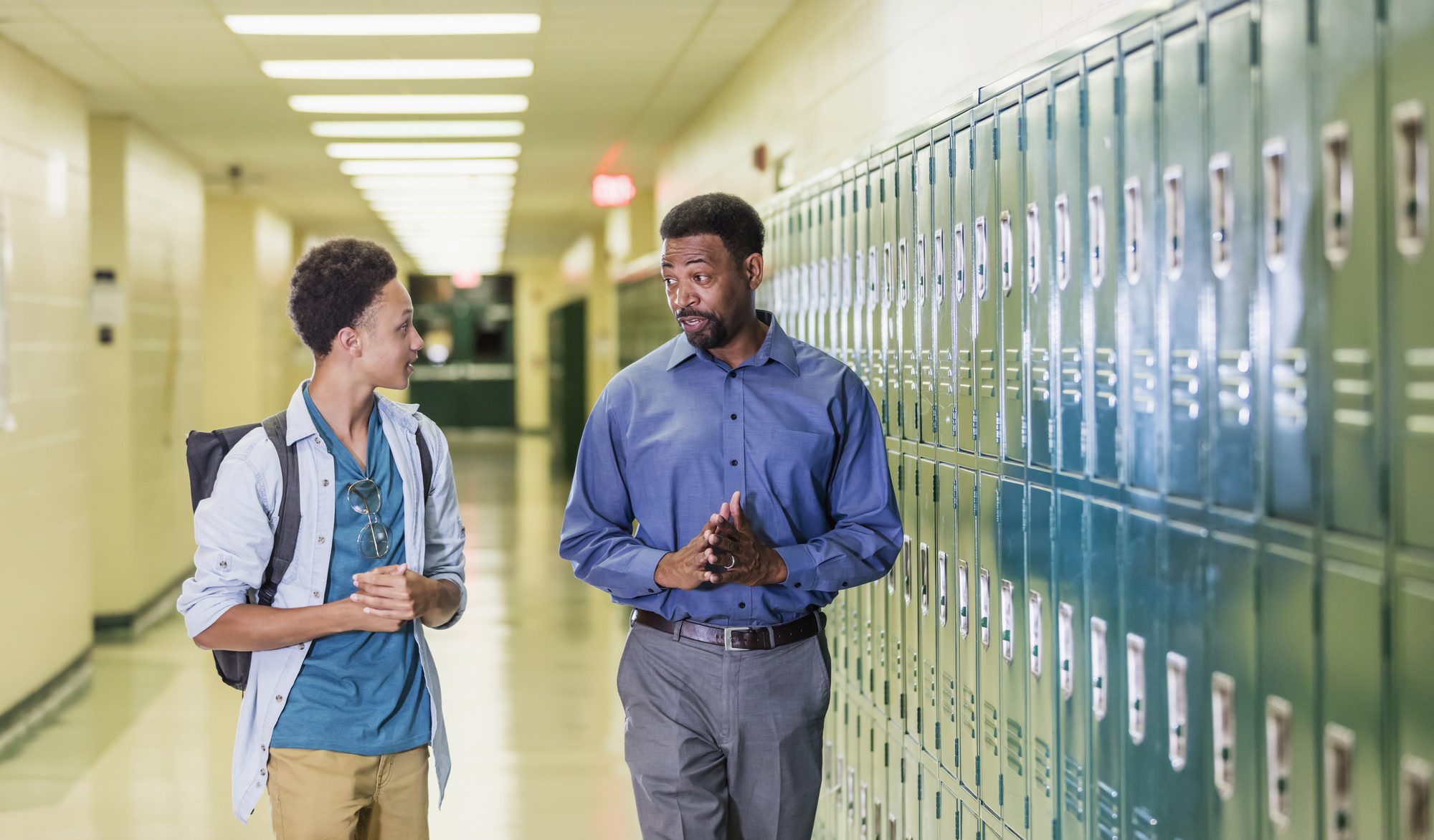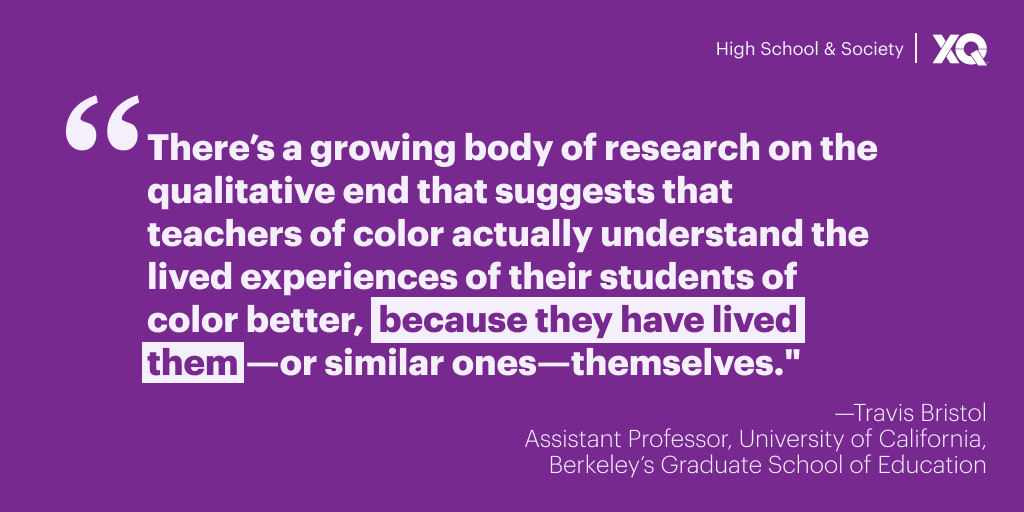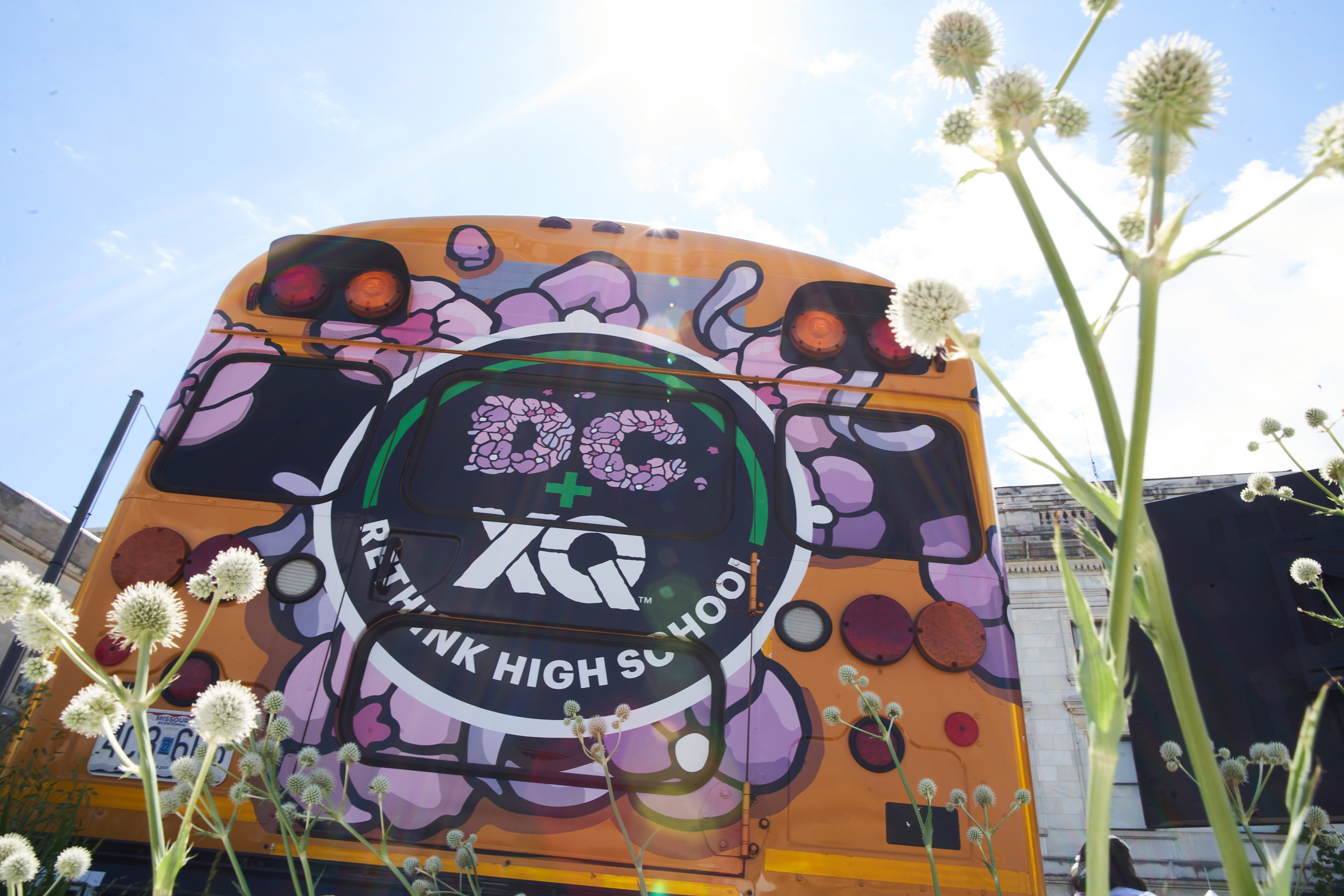Why Representation Matters to BIPOC Teachers and Their Students
We spoke to education leaders on why representation is important. Here’s their perspective on representation, inclusivity, and why we need to move beyond diversity for diversity’s sake.

Students learn best when they feel safe, seen, and included. A culture of belonging is crucial to rethinking high school so that students can succeed. Structural racism and lack of representation in schools often keep BIPOC students from experiencing the sense of belonging and recognition that every student deserves.
Addressing this inequity takes more than surface-level change. It means committing to diversity and inclusion at a deep, ongoing level. One of our XQ Design Principles is Strong Mission and Culture: a unifying set of values and principles that provide common purpose, express belief in the potential of every student, and define every aspect of a school. Adopting equity and diversity as core, unifying values can help schools build sustainable cultures where all students can thrive.
So what does this mean in practice? We invited renowned scholar Travis Bristol and a group of Teach Plus Fellows to reflect on why representation matters, inclusive education, and cultural diversity. Their insights offer calls to action for each of us—from building a more racially inclusive teacher pipeline to engaging educators meaningfully in the work of transforming our school systems to foster inclusion in education.
Building More Inclusive Education Systems for This Generation
Educators often speak of how the lack of BIPOC representation left them feeling isolated and lost in high school. Today, that desire to fill that gap for the next, more culturally diverse generation fills these educators with motivation. This desire to be a role model for students of color actually makes a strong difference in the classroom environment and in the academic trajectories of students.
“There’s a growing body of research on the qualitative end that suggests that teachers of color actually understand the lived experiences of their students of color better, because they have lived them—or similar ones—themselves,” explained Bristol. “These educators are much more empathetic and sympathetic about the real damages of racism in American society because they have experienced it as students.”

Teach Plus fellows echoed this sentiment, explaining when educators provide and catalyze feelings of acceptance and belonging in the classroom, they’re better able to connect, support, and educate students in deeper, more meaningful ways.
“When there are educators who look like their students. It can provide examples of how academic success might look. As a Black educator, I can prove to my students that they are capable. I get to give them the opportunity to see how I’ve created trajectories for myself in order to achieve success academically and professionally. I want my students to expand their trajectories,” says Shareefah Mason, a Dallas-based educator. “Many of my students have been a part of a failing school system from elementary all the way through high school. They don’t have the academic confidence they need to be successful. I hope my representation can grow that confidence.”
Andrea Thomas, a Native educator in New Mexico, describes how her identity and representation carries the weight of cultural preservation. “I want Navajo students who live on the reservation to have the opportunity and access to great teachers who look like them. I want them to be close and connected to their communities,” Thomas explains. “We need to educate our people so they can come back and be part of the change and be a role model for students. If they see educators that look like them, students will be more engaged with learning. Recognizing that need in our system has really guided me.”
The Importance of Representation in Education
For students looking for clear cultural diversity in the classroom and role models in their school, having a teacher from the same background can lead to deeper connections and more engaged learning. Takeru Nagayoshi “TK,” a Japanese-American, Massachusetts-based educator, exemplifies that role in his film analysis club consisting of around 20 students. “
It’s not lost on me that two-thirds of students in the club are Asian,” TK points out. “I raise this because it shows that identity matters. It’s no secret that my race plays an important factor in the makeup of this club. In a landscape that’s really short of educators of colors—especially those of Asian descent—my Asian students are hungry for an adult role model who looks like them.”
Emphasizing the importance of teacher diversity, TK says, “Every educator of color can tell you about a student from their race or identity who went to them for support, who went to them as an emotional confidant, or who found someone with whom they felt safe and comfortable. They don’t feel like they have to explain or justify themselves.”
TK is able to address shared experiences with his students candidly. In one instance, TK describes how, as an Asian-American educator, he was able to discuss affirmative action with a student who had felt that such policies sidelined Asian-American students in favor of Black and Latinx students.
“As an Asian adult, who’s grappled with similar misconceptions, I was able to guide [the student] to understand how a historical context placed that sense of resentment against larger justice. In that conversation, being an Asian educator gave me credibility and the authority to help the student recognize their own anti-Blackness and light skin privilege. I was able to help point out that there’s this greater need as a person of color to stand in solidarity with other communities of color. Being an educator of color allows us to model what it means to be an ally in a society that refuses to talk about race or race-related issues.”
Bristol elaborates that TK’s Japanese-American identity helped him better empathize with the student’s viewpoints, and guide that student accordingly. , “In TK’s instance, he could understand how to speak to the student, how to speak to her anxiety, and how to speak to her social and emotional needs.” Bristol adds, “He knew how to be responsive at that moment and create a really powerful learning environment where a student could push past their anxiety, their misconceptions, and their Anti-Black beliefs.”
Diversity for Diversity’s Sake Is Not Enough
While increasing BIPOC representation in our schools, building out a diverse staff, and adopting anti-racist hiring practices are necessary places to start, it’s not enough.
“The experience of a student of color is not monolithic. We have to be very selective and specific in enticing the right people toward the education field. We need to ensure that we’re not selecting people simply based on the fact that they look like students. We need to make sure that educators actually have the skills to build students up,” Mason explains.
“When I’m looking for teachers of color, I am looking for teachers of color who understand the varied experiences of the students and are willing to grow themselves in order to meet the students where they are. You have to learn how to be as diverse as you possibly can to give your students opportunities and experiences.”
Thomas agrees, explaining that “representation for the sake of representation” does more harm than good. “There’s a misconception that we’ve all had similar experiences. Which leads to this misconception of fit,” she explains. “If you get a Native American teacher and place them in any tribal community, there’s this conception that they are going to thrive. That’s not going to be the case. Just because you have the same skin color or hair color, it doesn’t mean you have the same experiences, the same traditions, and customs. Understanding the nuances and differences within and between tribal communities is really a challenge that I see in our push for equity.”
“We have a very narrow definition of what it means to be a good teacher in our country and in many of our schools,” explained Bristol. “Part of broadening that definition means encapsulating someone who truly cares about their students because you can’t help students master the content if they don’t feel that you care for them.”

Opening Up the Conversation: Sharing Experiences to Foster Inclusive Education
Students also benefit when the adults around them authentically share their own lived experiences. For Daniel Helena, an Afro-Latinx educator from Atlanta, this means acknowledging that his experience as an immigrant student and English language learner impacts his approach to teaching. “My mom and I could not speak English when we came to America. We were going through the education system with our eyes closed and hoping that we’d come out on the other side of it. I didn’t know that educational inequalities existed. Now as an educator I try to be that bridge for my students.”
Thomas sees how her and her fellow teachers’ experiences have impacted their approaches towards inclusive education as well: “The educators that I work with have faced a lot of the same challenges as their students, challenges like growing up in a single-parent household, growing up around substance abuse. These experiences provide us with a better understanding of where these kids are, but it also allows us to have high expectations. We know that this does not have to be their outcome.” Thomas adds, “It’s important to listen to the student, but you can’t pity them. You can’t feel bad or sorry for them. You have to uplift and empower them to succeed.”
How to Teach Diversity in the Classroom
What advice do these educators have for others who are committed to learning, growing, and fostering inclusion in education? Don’t let your fear of making mistakes when it comes to conversations around cultural diversity and race prevent you from trying.
“Embrace diversity, equity, and inclusion because we are blueprints for our students,” Mason contends. “When we are not flexible, when we are not versatile, then we are changing the trajectory for our students in a negative way.”
Many thanks to Travis J. Bristol for facilitating the discussion.









